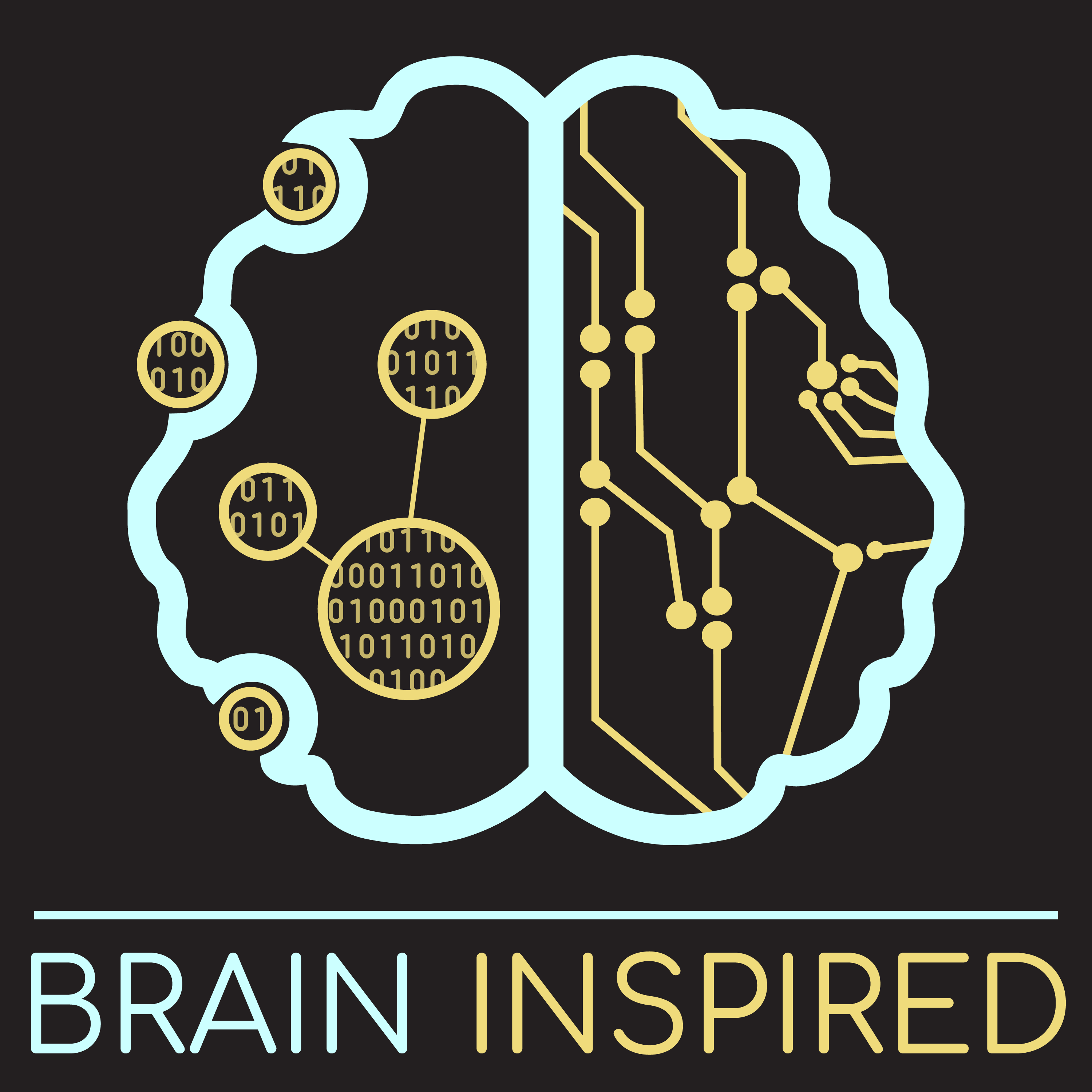 |
Brain InspiredWhere Neuroscience and AI Converge Author: Paul Middlebrooks
Neuroscience and artificial intelligence work better together. Brain inspired is a celebration and exploration of the ideas driving our progress to understand intelligence. I interview experts about their work at the interface of neuroscience, artificial intelligence, cognitive science, philosophy, psychology, and more: the symbiosis of these overlapping fields, how they inform each other, where they differ, what the past brought us, and what the future brings. Topics include computational neuroscience, supervised machine learning, unsupervised learning, reinforcement learning, deep learning, convolutional and recurrent neural networks, decision-making science, AI agents, backpropagation, credit assignment, neuroengineering, neuromorphics, emergence, philosophy of mind, consciousness, general AI, spiking neural networks, data science, and a lot more. The podcast is not produced for a general audience. Instead, it aims to educate, challenge, inspire, and hopefully entertain those interested in learning more about neuroscience and AI. Language: en-us Genres: Natural Sciences, Science, Technology Contact email: Get it Feed URL: Get it iTunes ID: Get it |
Listen Now...
BI 228 Alex Maier: Laws of Consciousness
Tuesday, 30 December, 2025
Support the show to get full episodes, full archive, and join the Discord community. The Transmitter is an online publication that aims to deliver useful information, insights and tools to build bridges across neuroscience and advance research. Visit thetransmitter.org to explore the latest neuroscience news and perspectives, written by journalists and scientists. Read more about our partnership. Sign up for Brain Inspired email alerts to be notified every time a new Brain Inspired episode is released. To explore more neuroscience news and perspectives, visit thetransmitter.org. Alex is an associate professor of psychology at Vanderbilt University where he heads the Maier Lab. His work in neuroscience spans vision, visual perception, and cognition, studying the neurophysiology of cortical columns, and other related topics. Today, he is here to discuss where his focus has shifted over the past few years, the neuroscience of consciousness. I should say shifted back, since that was his original love, which you'll hear about. I've known Alex since my own time at Vanderbilt, where I was a postdoc and he was a new faculty member, and I remember being impressed with him then. I was at a talk he gave - job talk or early talk - where it was immediately obvious how passionate and articulate he is about what he does, and I remember he even showed off some of his telescope photography - good pictures of the moon, I remember. Anyway, we always had fun interactions, even if sometimes it was a quick hello as he ran up stairs and down hallways to get wherever he was going, always in a hurry. Today we discuss why Alex sees integration information theory as the most viable current prospect for explaining consciousness. That is mainly because IIT has developed a formalized mathematical account that hopes to do for consciousness what other math has done for physics, that is, give us what we know as laws of nature. So basically our discussion revolves around everything related to that, like philosophy of science, distinguishing mathematics from "the mathematical", some of the tools he is finding valuable, like category theory, and some of his work measuring the level of consciousness IIT says a whole soccer team has, not just the individuals that comprise the team. Maier Lab Astonishing Hypothesis (Alex's youtube channel) Twitter: Sensation and Perception textbook (in-the-making) Related papers Linking the Structure of Neuronal Mechanisms to the Structure of Qualia Information integration and the latent consciousness of human groups Neural mechanisms of predictive processing: a collaborative community experiment through the OpenScope program Various things Alex mentioned: “An Antiphilosophy of Mathematics,” Peter J. Freyd youtube video about "the mathematical". David Kaiser's playlist on modern physics. 0:00 - Intro 4:27 - Discovering consciousness science 11:23 - Laws of perception 15:48 - Integrated information theory and mathematical formalism 23:54 - Theories of consciousness without math 28:18 - Computation metaphor 34:44 - Formalized mathematics is the way 36:56 - Category theory 41:42 - Structuralism 51:09 - The mathematical 54:33 - Metaphysics of the mathematical 59:52 - Yoneda Lemma 1:12:05 - What's real 1:26:22 - Measuring consciousness of a soccer team 1:35:03 - Assumptions and approximations of IIT 1:43:13 - Open science






